Most VR games emphasize object manipulation, treating space as a passive backdrop. Yet in VR, space is fundamental to immersion and presence. This project reimagines space as an active medium of interaction, inviting users to engage with the virtual environment as Space itself.
WHAT IF WE COULD PLAY WITH SPACE?

Realted Works
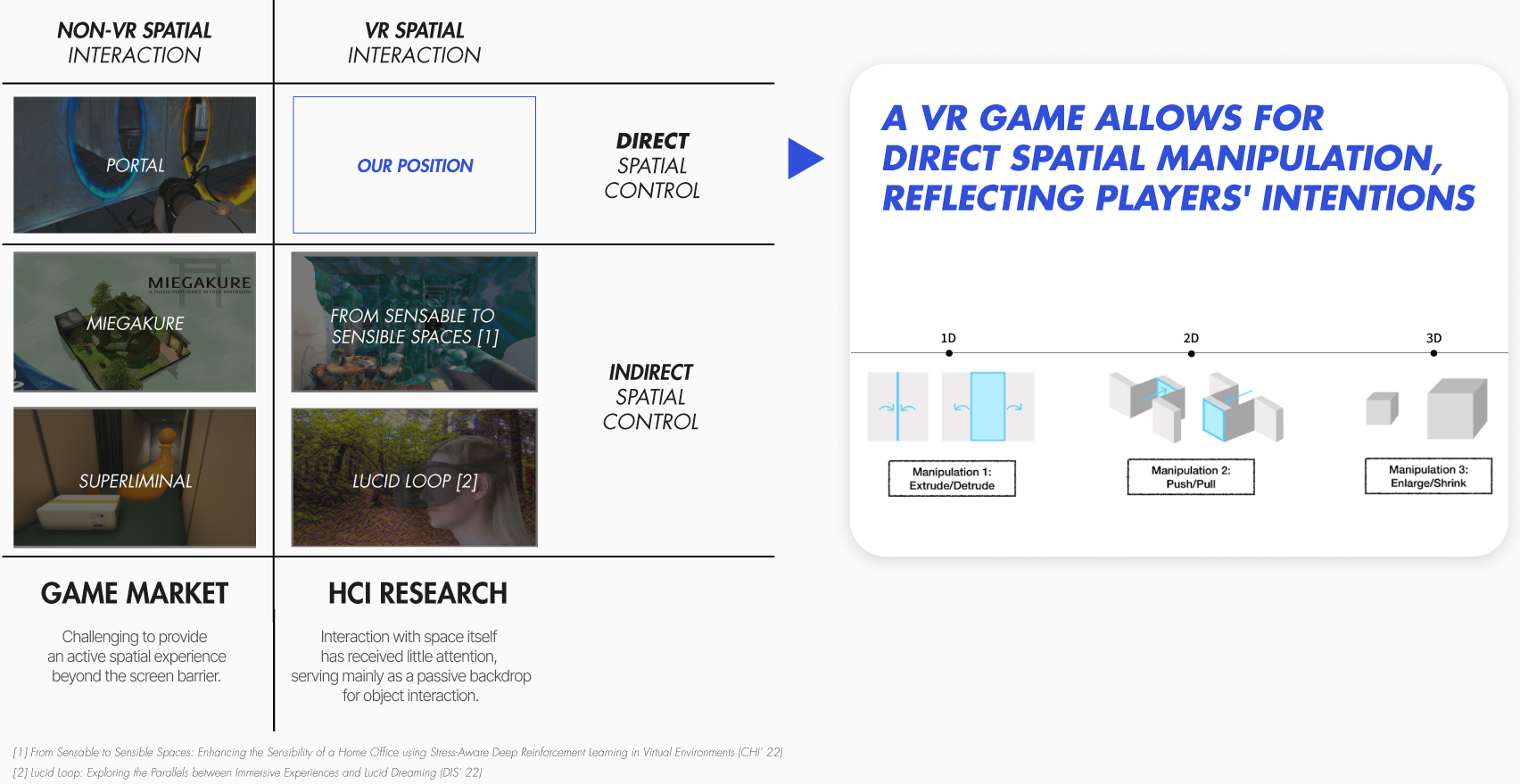
Formative Study
| CHALLENGES | 1. Interaction Accessibility: Interacting with VR environments can be ambiguous and challenging, often requiring players to focus on complex controls rather than the experience itself. 2. Spatial Perception: Players may struggle to understand and manipulate near and far spaces intuitively within the virtual environment. | APPROACH | To achieve this, a formative study was conducted to observe how players interacted and perceived near and far spaces in order to design game interaction. Insights obtained through thematic analysis of interview scripts and observed participants’ behavior during the study. |
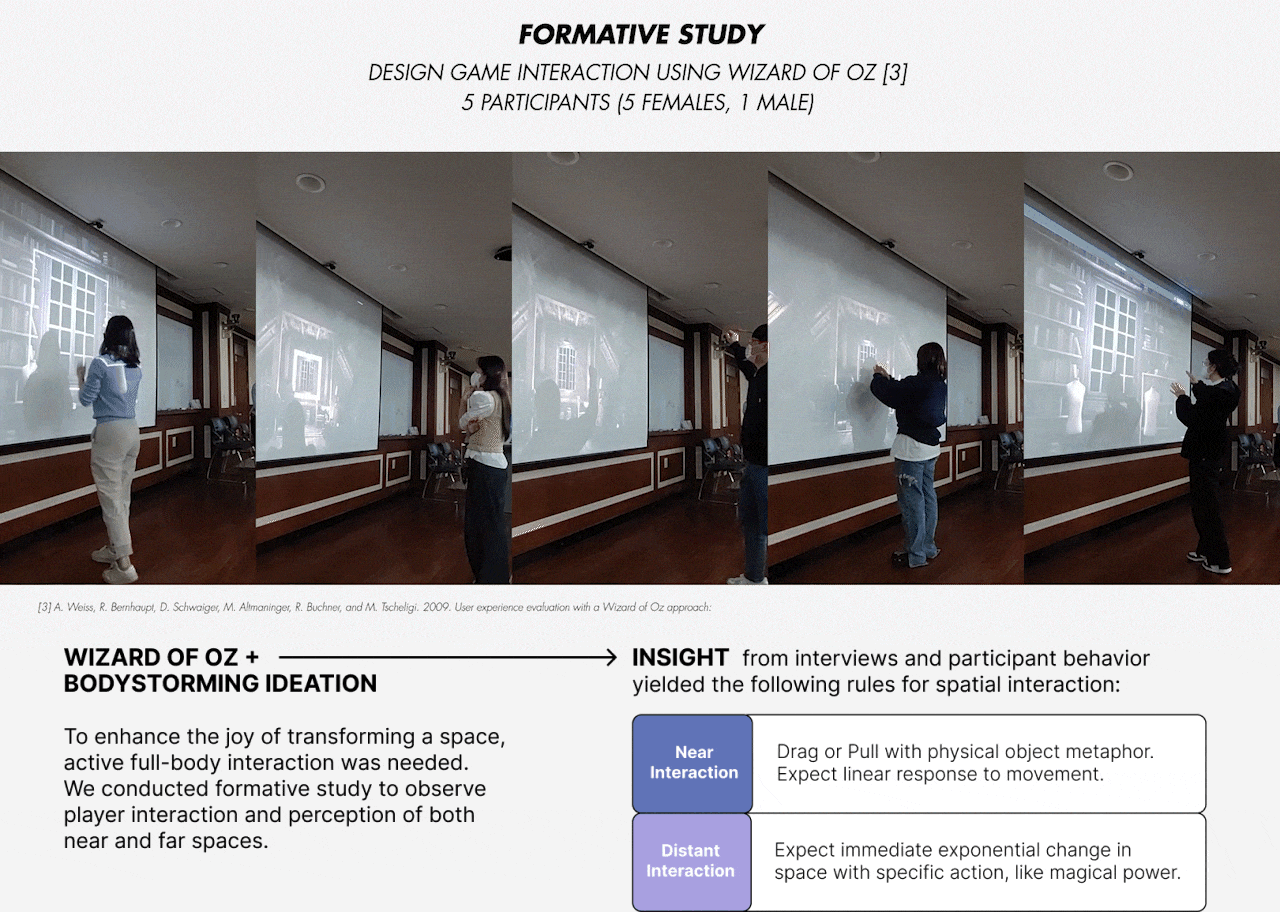
Interaction Design
Building on players’ perception of distant and near spatial transformations, I designed interaction gestures grounded in the sensing capabilities of the Oculus HMD and controllers. These gestures were implemented as actions distinguishable by head and hand positional data, providing a consistent and technically reliable method for spatial manipulation without additional tracking hardware.
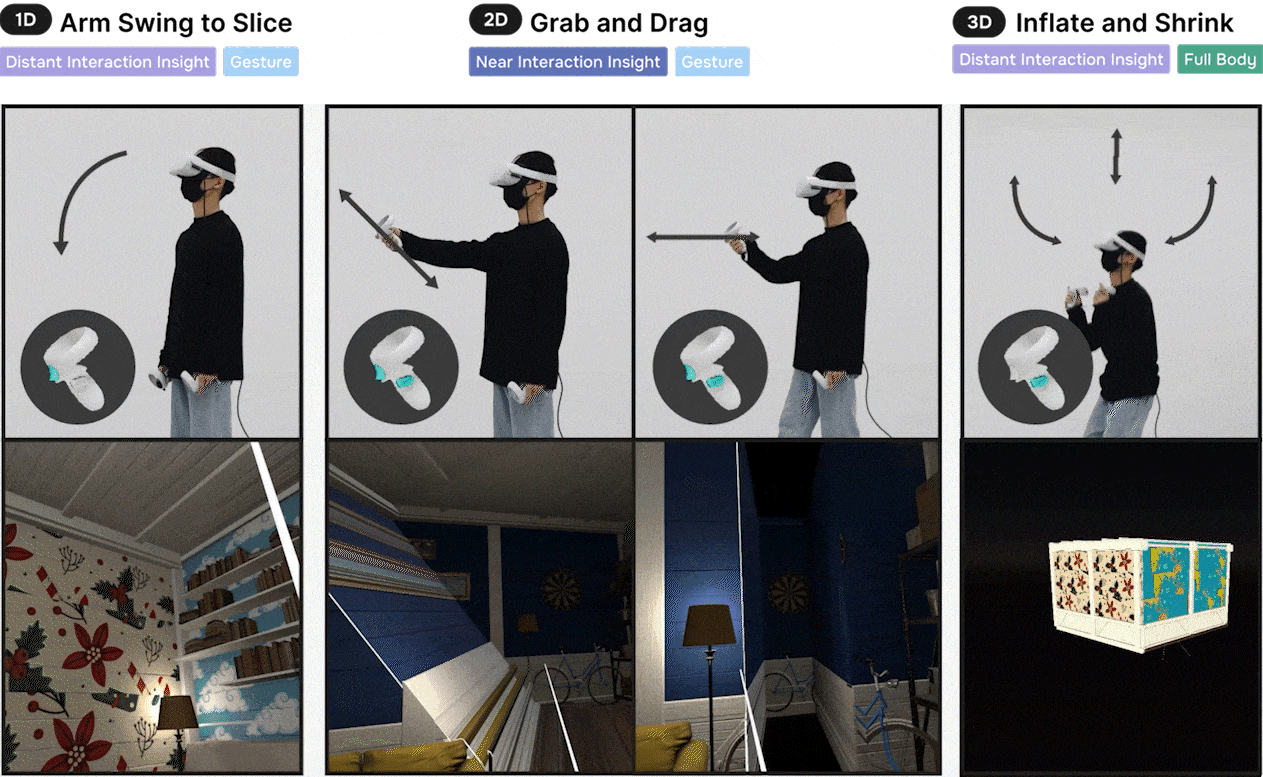
Game Phase Design
Our game is designed to seamlessly shift the player’s focus from objects to space. It’s played in three phases to inspire and provide enjoyment in interacting with the game space.
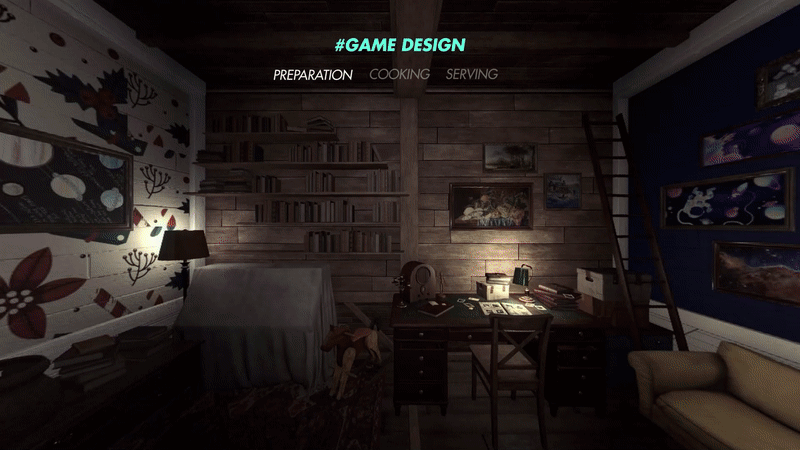
1. Preparation Phase for shifting focus and motivation As players choose materials and music for the room-scale space, their focus shifts naturally from objects to the space itself, sparking a desire for customization and motivating them to actively transform the space to their taste in the next step.

2. Cooking Phase for spatial interaction In this stage, players use their bodies to transform the surrounding room-scale space—slicing, stretching, inflating, or shrinking it. To maintain focus on spatial interaction, all objects move only with the room rather than independently.
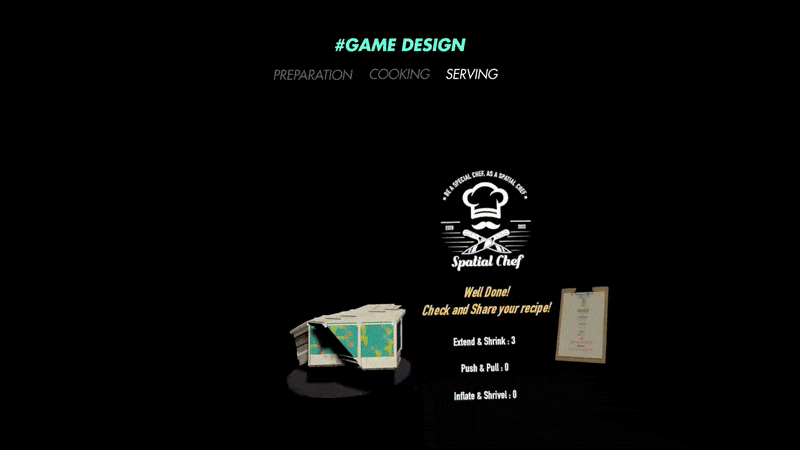
3. Serving Phase for enhancing the fun This stage deepens spatial fun by replaying players’ movements as a reward. The transformed space is served as a miniature dish with a recipe that reflects their action. It enriches spatial engagement by letting players view the space as a whole and relive their movements from the outside.

Implementation
We devised techniques to maintain the structural and visual coherence of the space as the player transforms it in order to preserve the experience of manipulating a space within a space. Used Oculus Quest 2 and Unity XR toolkits for implementation.


Evaluation
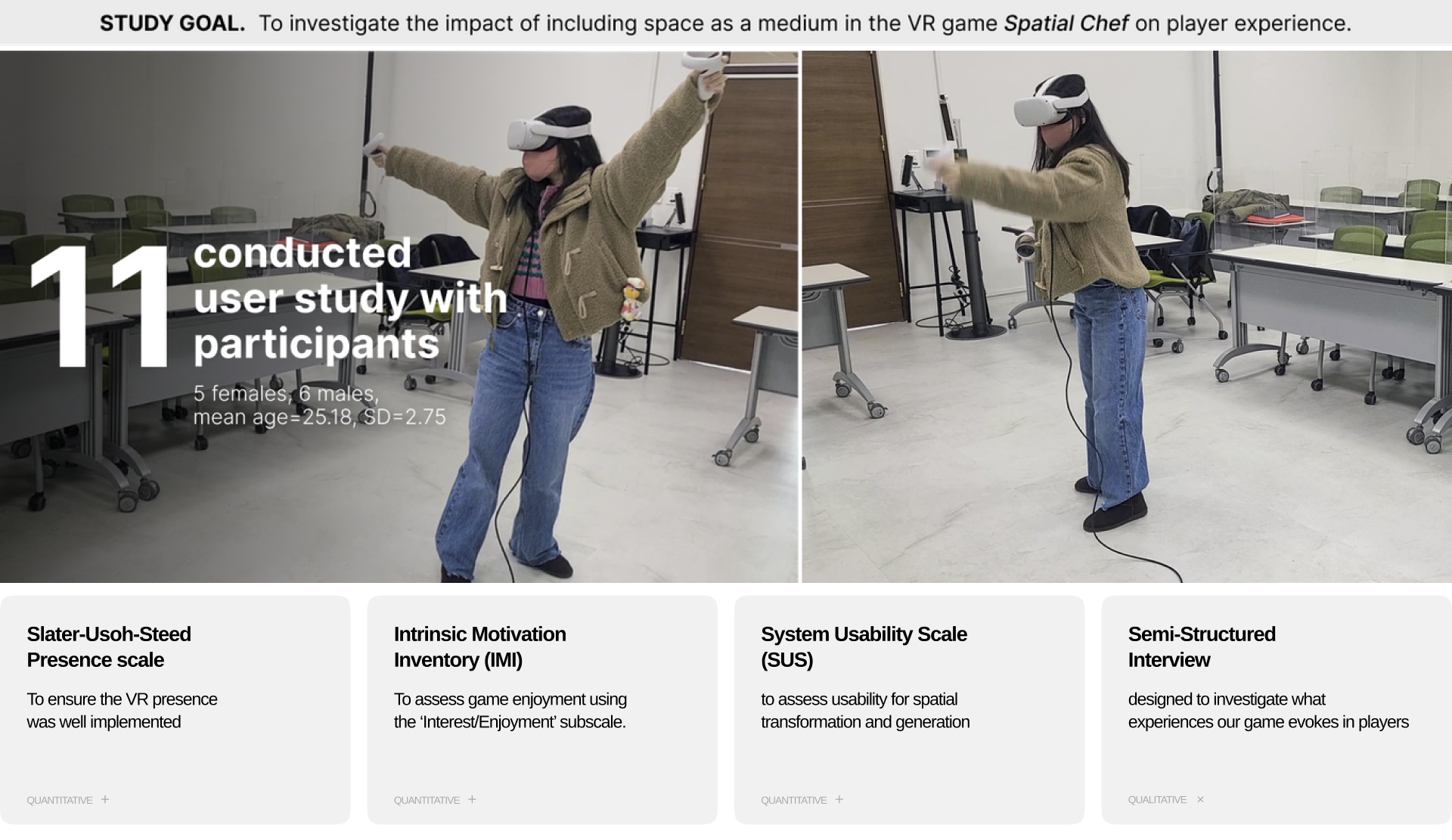
Quantitative Results

Qualitative Findings (Thematic Analysis)
Novel and Intuitive Spatial Manipulation.
Participants found it refreshing to interact with the space itself rather than with individual objects. Although spatial manipulation was initially unfamiliar, it was perceived as intuitive and natural.Five participants selected the arm-swing gesture as the most natural manipulation, citing its alignment with the audio-visual feedback from immediate spatial changes.
“Normally, VR games focus on objects, but it was refreshing to interact with the space itself by stretching and contracting it”
“It was easy and intuitive in that it was possible to control a space of ambiguous concept through realistic body movements.”
Being Both a Player and an Absolute.
The participants felt a sense of absolute power and presence as players when manipulating the space, which was a unique experience that made them more aware of their surroundings. Similarly, the quantitative evaluation also reflected a high level of presence, with an average score of 5.11, consistent with the interview statements.
“Space is a larger concept than objects. So I had a strong sense of being in the VR space because I was aware of everything around me rather than just the small objects… At the same time, I felt like I had absolute power because I could bend space with my gestures alone.”
Realized Fantasy Stimulating Creativity.
Viewing the transformed space during the game, participants reacted as follows. Participants presented creative spatial transformation results to suit their tastes, associating fantasy imaginations. In particular, the more the room was transformed, the more abstract the room itself became, encouraging their creativity.
“Look! I’m in Interstellar right now.”
“It reminds me of Harry Potter. It’s fun to see unexpected graphics that seem to be in the real world.”

